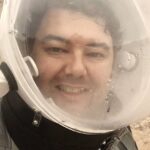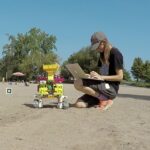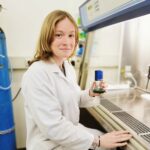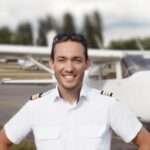JAMES BURK | Commander
ALINE DECADI | Executive Officer + Crew Geologist
CÉCILE RENAUD | Greenhab Officer + Crew Biologist
JULIEN VILLA-MASSONE | Crew Engineer
ERIN “ROBOTZWRRL” KENNEDY | Crew Robotics Engineer
AUDREY DEROBERTMASURE | Medical Officer
KRIS DAVIDSON | Crew Journalist
We, the Transatlantic Mars Society, consisting of seven space professionals, plan to conduct several experiments and projects, including testing experimental robotic designs, new technologies for coordinated field science using Virtual Reality, biofeedback and pharmacology studies, simulating Mars-like conditions to grow algae for human food and oxygen production, blockchain-based voting and logistics management, and more. We aim to solve some of the challenges faced by future Mars astronauts, while also advancing technology and research for long-term human presence on Mars.
MarsVR – Coordinated Field Science Testing and Demonstrations + VR Terrain Scouting
Crew 261 will be the first to utilize the updated MarsVR application with real-time multi-participant capabilities while in simulation protocol at the MDRS. We will attempt to use it to plan and execute EVAs.
Crew 261 will be testing EVALink, a new system developed by the Mars Society’s Chicago chapter, which aims to enable real-time field science by providing long-range, low-power digital connectivity over ad hoc mesh network topologies. Powered by Meshtastic, an open-source hardware platform, EVALink will allow MDRS crew members on EVA to build an ad-hoc data network while exploring a field site, and sending back important information in near real-time, such as individual crew member’s excursion status, location information, and allow messages and photos to be sent back to the Hab (and into the VR experience) from the field.
Specifically, we first plan to utilize Garmin devices which duplicate the Meshtastic capability operationally, to build EVA experience and rigor amongst our crew. Then, we will utilize the prototype EVALink devices after performing initial field testing to ensure they are accurate and dependable. The MarsVR project team and EVALink team are available for remote support of these activities.
Bioreactor and Spirulina-Focused Experiments in GreenHab
Crew biologist Cecile Renaud is leading the crew’s effort to solve one of the challenges faced by future Mars astronauts: the need for life support systems that optimize growth conditions for food cultivation and oxygen supply. Spirulina has long been viewed as a promising food source for future Mars colonists. However, production of it requires a lot of energy, and nutrients are often wasted. Crew 261 will deploy a custom bioreactor developed by the Scotland-based company Algacraft (http://www.algacraft.com/), which simulates an active growing culture in a Mars-like environment. In addition, as part of her PhD program (UMons), Cecile will conduct biostimulation for consumable plants using Spirulina as biostimulant to improve plants health and growth.
Julien Villa-Massone, an engineer and software developer, created and put into action the software portion of the Algacraft bioreactor experiment. He will also perform in-situ testing to ensure that all operational requirements are met. Julien will use this energy-intensive device as a dispatchable load to test the first smart-grid network at MDRS. To accomplish this, he will need to add a specialized smart grid controller and use a low-power communications protocol that can prioritize a large number of appliances. This work is crucial for any isolated base where the ability of life support systems to access reliable power is necessary for human survival.
COSMOS – Pharmacological experiments
Health and Safety Officer Audrey Derobertmasure and Executive Officer Aline Decadi started the COSMOS project, a suite of experiments to test a new approach to pharmacological studies with the aim of optimizing, adapting and individualizing drug treatments. To date, very few manned pharmacokinetic/pharmacodynamic (PK/PD) experiments have been performed, due to logistical and technical constraints, none in the cardiovascular domain. We will study the elimination of caffeine from the body before, during and after the mission. We will also evaluate the impact of the extreme environment and confinement during the MDRS mission on the markers of early vascular aging thanks to new non-invasive and easily transportable vascular exploration techniques.
Atmosphinder – Wind-powered Mars Exploration Rover Experiment
Crew robotics expert, Erin Kennedy, has designed Atmosphinder (http://robotzwrrl.xyz/atmosphinder/), an innovative wind-powered rover to investigate seasonal eruptions in the south polar region of Mars and the role these geomorphic processes play in the atmospheric system of Mars. The experimental prototype is a seven-foot tall robotic wheel with wind-powered sails that propel the rover. As the wind pushes the sails, the hoops begin to turn about a central bearing that is stabilized by reaction wheels. The electronics payload is suspended in the roll cage. The electronics are used to control sail trimming, precision drive module, sensors, reaction wheels, and lights, and also contain environmental sensors.
Nexus Aurora Rover
Crew 261 will also be testing a new Mars rover designed by the Internet-based engineering collective Nexus Aurora (https://nexusaurora.org/), that has multiple science instruments and capabilities for sample collection and analysis.
High-Performance Drones for VR/360 Content Creation
Commander James Burk and crew engineer Julien Villa-Massone, who is also an experienced pilot, will test pilot a VR-enabled high performance drone designed by Adapa360 (https://adapa360.com/) of Norway to capture additional terrain segments for the MarsVR project. The drone also has utility as a tool in unfolding recon and emergency situations.
We will also fly a Mavic Air 2 to capture drone footage of the MDRS campus and key terrain segments that will eventually appear in future MarsVR projects, and for other public outreach purposes.
Astronomy Observations
Executive officer and crew astronomer Aline Decadi will harness the incredible power of the Musk Observatory, and a small personal telescope, donated by long-time Mars Society volunteer Ryan Kennedy, to perform astronomical observations related to Mars and our solar system’s current state.
Journalist-in-Residence
Finally, crew journalist Kris Davidson, a photojournalist with experience publishing work in prominent media outlets such as National Geographic, will document the crew’s activities and lifestyle at the MDRS throughout the two-week mission.
Marscoin Node & Voting/File Experiments
In a project spearheaded by noted crypto pioneer Lennart Lopin, Marscoin (https://www.marscoin.org/) is a cryptocurrency developed in 2014 with future Mars colonists in mind. Built with blockchain technology, Marscoin is poised to assume a greater role in the larger development of a fair and transparent society on Mars. During our mission we will utilize a new custom version of the Marscoin network ledger, developed by Lopin and his team, to securely and efficiently perform crew-wide voting on initiatives of common interest (similar to votes at an early Mars settlement), as well as assisting the taking of inventory and file storage (IPFS) using immutable blockchain technology. Crew 261 intends to install a Marscoin node at the Mars Desert Research Station, making use of a new general purpose computer file server that will be a permanent addition to the campus, and has the added benefit of allowing future crews to store and share research and other information relevant to the MDRS program.
UCF Behavioral Study
Crew 261 will participate in an ongoing research study, led by researcher Andres Kaosaar as a part of his PhD studies at the University of Central Florida, on how emotions and coping strategies affect teams operating in isolated, confined and extreme environments.










You must be logged in to post a comment.